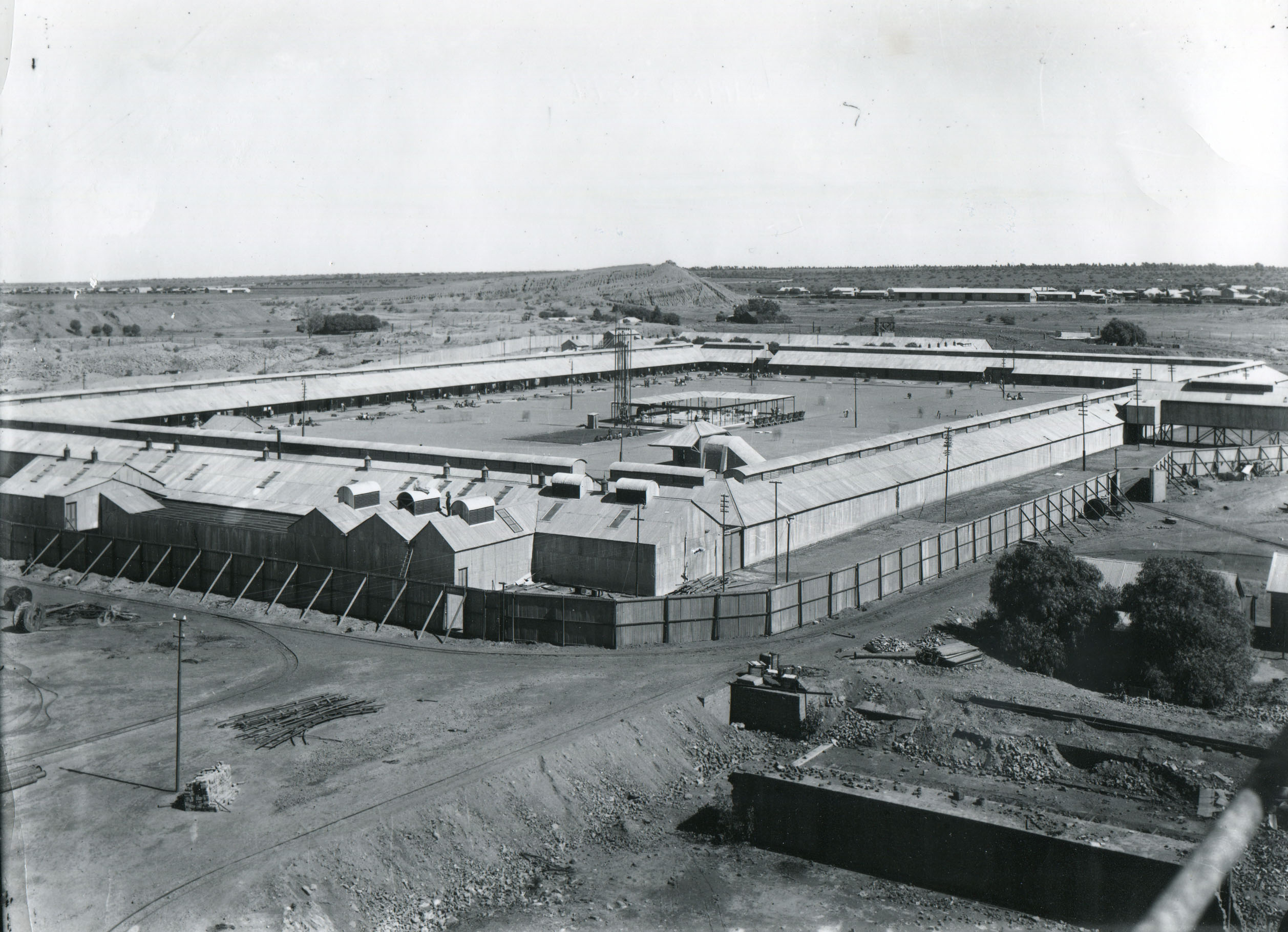Kimberley, now the capital of Northern Cape province in South Africa, was established in 1873 under the authority of the Cape Colony. The site, inhabited earlier by the local Griqua people, was previously named Vooruitzigt by the De Beer brothers, and later known colloquially as “New Rush” during the influx of prospectors after 1870.
Noteworthy early works on the Kimberley diamond fields include: Jonathan Crush, “Scripting the compound: power and space in the South African mining industry,” Environment and Planning D: Society and Space 12, no. 3 (1994): 301–324; Alan Mabin, “Labour, capital, class struggle and the origins of residential segregation in Kimberley, 1880–1920,” Journal of Historical Geography 12, no. 1 (1986): 4–26; Robert Vicat Turrell, Capital and Labour on the Kimberley Diamond Fields 1871–1890 (Cambridge: Cambridge University Press, 1987); William Hewlett Worger, “The making of a monopoly: Kimberley and the South African diamond industry, 1870–95” (PhD diss., Yale University, 1982).
Ruth Wilson Gilmore defines racism as “the state-sanctioned and/or extralegal production and exploitation of group-differentiated vulnerability to premature death.” Ruth Wilson Gilmore, Golden Gulag: Prisons, Surplus, Crisis, and Opposition in Globalizing California (Berkeley: University of California Press, 2007), 247. For more on the relationship between race and vulnerability to death, see the work of Saidiya Hartman, Achille Mbembe, and Christina Sharpe.
Kimberley’s tourism circuit includes trips along a portion of the city’s original tramline, a stop at the antique cast iron streetlights, a site marking the city’s pioneering role in South African aviation, and dozens of other examples of well-preserved infrastructure from the nineteenth century. The Big Hole Museum, Kimberley’s premier tourist attraction, funded by De Beers, describes its attractions as “period buildings that have been preserved or restored to their original glory; these include a church built in Europe and shipped to Kimberley, Barney Barnato’s boxing academy, the digger’s sleeping quarters and the De Beers railway coach, used by Cecil John Rhodes to commute between Cape Town and Kimberley.”
The Engineering and Mining Journal, considered the premier engineering journal of the nineteenth and early twentieth centuries, contains countless references to the management of native labor forces around the world. Take, for example, a set of four articles on the Kimberley diamond mines published in the journal between 1903 and 1905. The reports were written by Thomas Lane Carter, an American engineer trained at Tulane University, who was working in South Africa at the time. Carter’s writings include geological observations and notes on the innovation and sophistication of the De Beers mining techniques, alongside discussion of how De Beers managed the specific qualities of the southern African Native laborer. A second relevant example is the 1907 publication of a lecture delivered by J.H. Pitchford to engineering students at the University of California. The lecture includes mention of De Beers and the native laborers in its employ, whom he describes as “the happiest and most independent people in the world” due to the success of compounding.
Government Notice 1879: Report of T.C. Kitto, John Michael Smallberger Collection, Series B, Subseries B23 Government Publications, Folder 1, University of Cape Town Special Collections, Cape Town, South Africa.
Danielle C. Kinsey, “Imperial splendor: Diamonds, commodity chains, and consumer culture in nineteenth-century Britain” (PhD diss., University of Illinois at Urbana-Champaign, 2011).
Some of the most compelling work on infrastructural violence is on the occupation of Gaza; see, for example, Jasbir Puar, Francesco Sebregondi and Helga Tawil-Souri.
Antina Von Schnitzler, “Citizenship prepaid: Water, calculability, and techno-politics in South Africa,” Journal of Southern African Studies 34, no. 4 (2008): 899–917.
